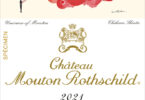
You may also like
Happy Easter from the Team at Connoisseur Magazine!
1 month ago
About Connoisseur Magazine
3 months ago
by Staff Writer
NOW ON VIEW: PAUL PFEIFFER AND EDDIE RODOLFO APARICIO...
4 months ago
The label for Château Mouton Rothschild 2021...
5 months ago
by Staff Writer
Centara Grand Beach Resort & Villas Hua Hin-A...
7 months ago
CENTARA GRAND BEACH RESORT HOTEL AND VILLAS -AN...
7 months ago






